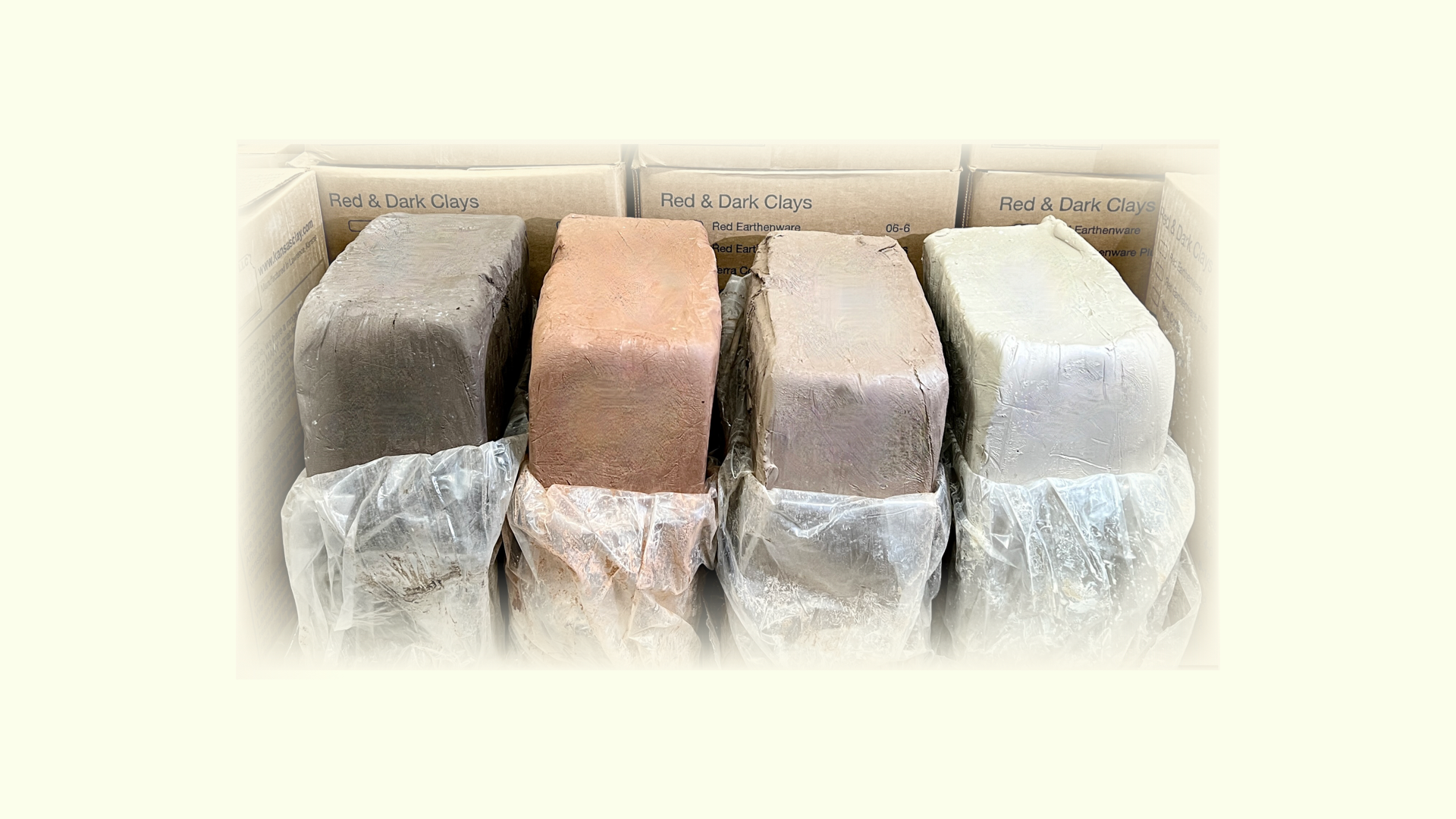Skutt Dual Intake Kit
Skutt Dual Intake Kit
Share this product
It includes the ducting Y, the additional ducting and the collection cup. It also necessary to purchase this kit if you are venting a kiln over 12 Cu/Ft like the KM1627-3 PK because of the need to extract more fumes.
Q.Why is room air venting important to people?
A. Kiln manufacturers have always recommended that firing areas have adequate ventilation. There are many reasons why kiln venting stressed more now. Today's environmental consciousness has created more awareness of potential health hazards. Studies have shown that carbon monoxide emissions can exceed OSHA Threshold Limit Values during bisque firing of electric kilns. Formaldehyde and sulfur dioxide also may be present in lower concentrations. Because of these concerns, kiln venting is required by building code in most areas.
Q.Why is internal kiln venting important to my ware?
A. Ceramic and glass fusing materials, including greenware, glazes and lusters, contain organic compounds. The first phase of the firing process removes these gases or vapors from the ware before the higher temperature changes take place. These contaminants need to be removed from the kiln, and replaced with fresh air. This is especially important with red, orange, yellow and brown glazes and lusters, because they need oxygen for good results.
Some specific problems related to poor venting include:
- Grayish inner areas (black core) when bisque firing earthenware.
- Unburned carbon in bisque ware that causes crazing, pinholes or blisters during glaze firing.
- Dulled surfaces and cloudy colors caused by sulfur gases.
- Weak colors in red-orange-yellow glazes.
- Color migration caused by glaze fumes depositing on nearby ware.
- Cones which fall improperly due to inadequate oxygen.
If your firing chamber is not properly vented, your work is likely to suffer.
Q.Can you describe my kiln venting options?
A. There are several options, ranked here in order of sophistication:
- Natural ventilation from open doors and windows.
- Room ventilation fans.
- Convection canopy collection hoods.
- Mechanical fan collection hoods.
- Mechanical downdraft vent systems.
Q.What are the main differences between venting systems?
A. Window ventilation and convection hoods are passive—the warm fumes rise, and hopefully, are diluted or escape. This requires very large volumes of fresh air, which is costly in the winter.
Collection hoods with electric fans do a better job of removing fumes, but fumes still enter the room air before they are collected. There is usually still a significant odor. External hoods do not help internal kiln performance.
Mechanical downdraft systems, such as the Skutt EnviroVent, were developed to address both needs:
- Improved kiln firing chamber heat distribution and circulation for more consistent firing results; and
- Removal of fumes directly from the firing chamber before they can post a health hazard. Little or no odor can be detected.
Q. How much does heat distribution vary?
A. A one-cone difference is common from top to bottom of an unvented kiln. You can observe this difference with cone groups set at different levels. The difference can grow great with larger electric kilns, especially when firing to low temperatures. For example, cone 03 has bent on a top shelf when only cone 05 has bent on a bottom shelf. Tests have shown a 30° difference top to bottom on high fires and 80° difference when low firing.
Q. How much does the EnviroVent help heat distribution?
A. Heat naturally rises therefore the bottom of the kiln can fire cooler than the top, especially at lower temperature ranges. On tests conducted on a 10 cu. ft. kiln with pyrometers at six levels, it was found that the EnviroVent can cut temperature differences to about half of normal. The top-to-bottom differential was cut from 79° to 45°. Some users have reported even greater improvement in heat distribution.
Q. How does it work?
A. Developed jointly with the Edward Orton Jr. Ceramic Foundation, the EnviroVent is protected under U.S. patent 4,863,374. It is unique because it creates a downdraft venting effect, immediately mixing fumes with cooling air in a closed plenum chamber at the bottom of the kiln. The venting requires a few very small holes to be drilled in the lid and floor of the kiln . The fan motor mounts to the wall and vents the fumes to the outside much like a household dryer.
Q. Does this require major Modifications to my kiln?
A. No. You can use the twist drills we provide to bore though the soft firebrick by hand. The holes are quite small, shown here at actual size. As an example, the Skutt 1018 needs only two 15/64” holes in the floor and lid. We can pre-drill the kiln in the factory at the time it is ordered. Be sure to tell your distributor when ordering your new kiln that you want it drilled.
Q. Is installation difficult?
A. No. You drill the few holes needed for your kiln, place the EnviroVent 2 spring loaded plenum cup under your kiln and mount the motor to the wall. We supply the aluminum drier ducting that is used between the plenum cup and the motor. Skutt even supplies the stainless sleeve that is needed to pass through the wall.
It runs on 115V household current. If you install the EnviroVent on a kiln with a metal floor plate, you will need an electric drill.
Q. Must I always turn on the EnviroVent when I fire?
A. Yes. The airflow is necessary to cool the EnviroVent's electric motor. However, you will want to use the EnviroVent for all types of firings in any case.
Q. Can I do burn-out firings?
A. The EnviroVent was designed for conventional pottery techniques. A large load of burn-out pieces may momentarily overload the EnviroVent. We recommend smaller loads of burn-out pieces.
Q. Can I rearrange my kiln area easily?
A. Certainly, The vented air is cool enough to allow you to use flexible ducting away from the kiln. There are no overhead brackets or pulleys to restrict -your locations.
Q. Does the EnviroVent change firing times?
A. There may be a slight increase of 10 to 15 minutes to shut-off in an 8 hour firing. However, your total kiln firing cycle will probably be shorter because the EnviroVent removes heat from the kiln after shut-off without causing thermal shock.
Q. What does the UL listing of a kiln vent system mean?
A. It means that the manufacturer has submitted the vent unit, properly installed on specific kiln models, to Underwriters' Laboratories for rigorous testing under actual high-heat firing conditions. When installed on Skutt UL kilns, the EnviroVent is the only UL listed downdraft vent system.
Some kiln vents use an electric motor which may have been UL listed for general room temperature use. This does not make their vents UL listed.
Q. What is The EnviroLink?
A. The EnviroLink is an accessory item that can be ordered for the EnviroVent and Envirovent 2 that works in conjunction with the Skutt KilnMaster or GlassMaster controller. It allows you to program the controller to automatically turn the vent on and off throughout a firing program. You simply enter an on/off setting for each segment of a Ramp and Hold program while you are programming the kiln. There are preset “vent programs” that can be run in conjunction with a ConeFire Mode or GlassFire Mode program as well.
Pre-Order/Special Order
Your payment information is authorized at checkout, your order is then reviewed by staff, and your payment is processed securely after your order is confirmed. We do not store credit card details nor have access to your credit card information.










